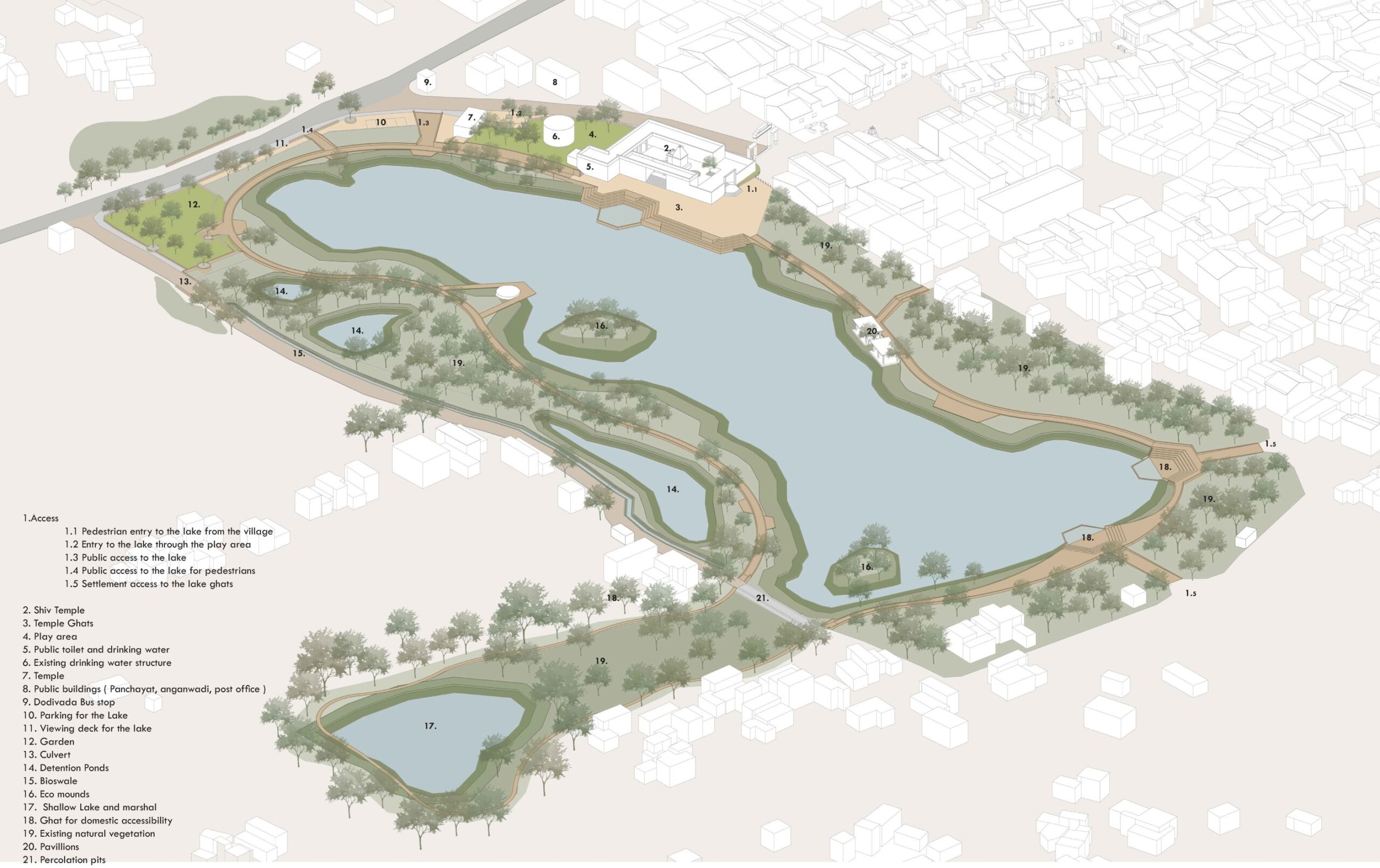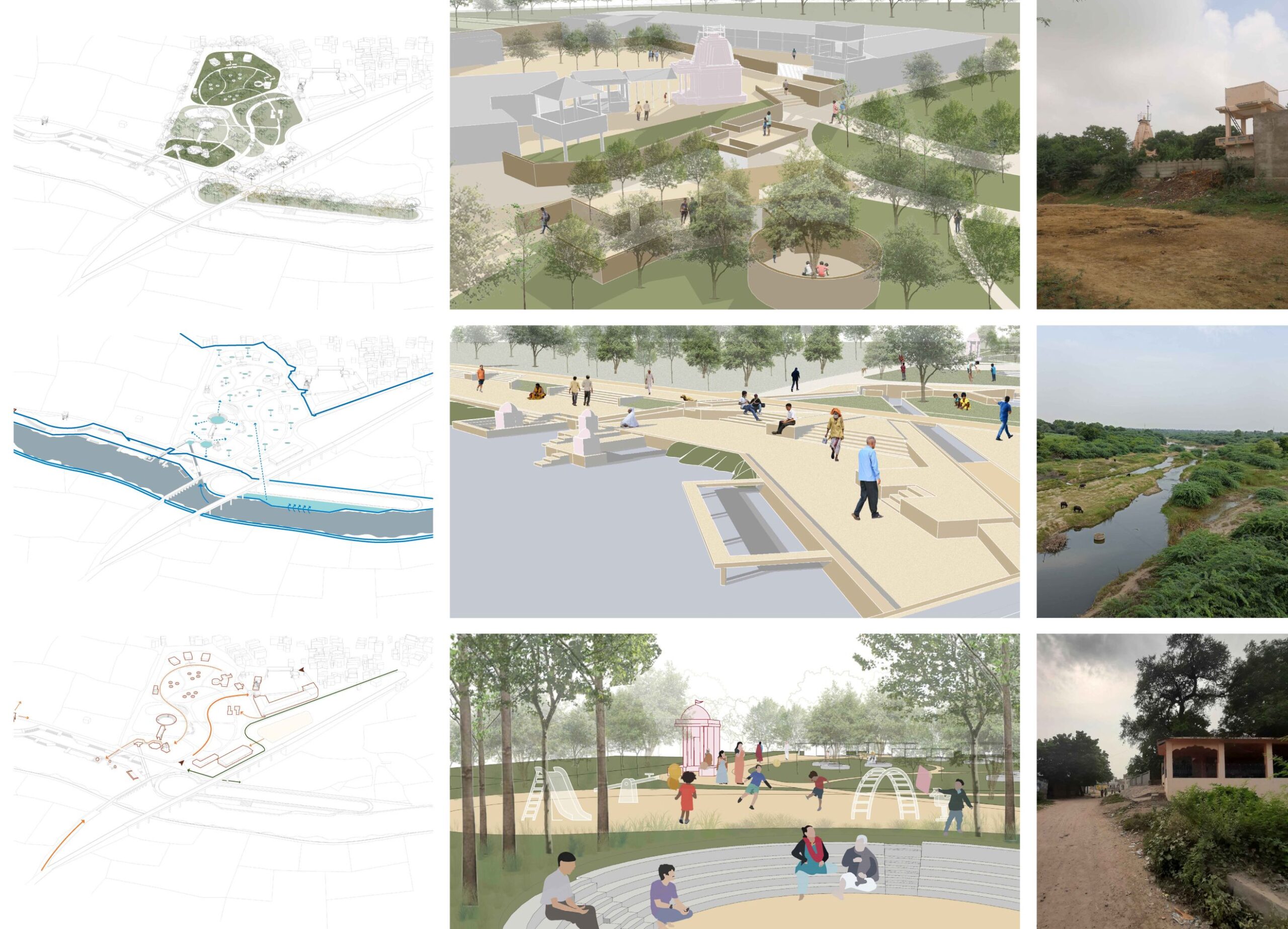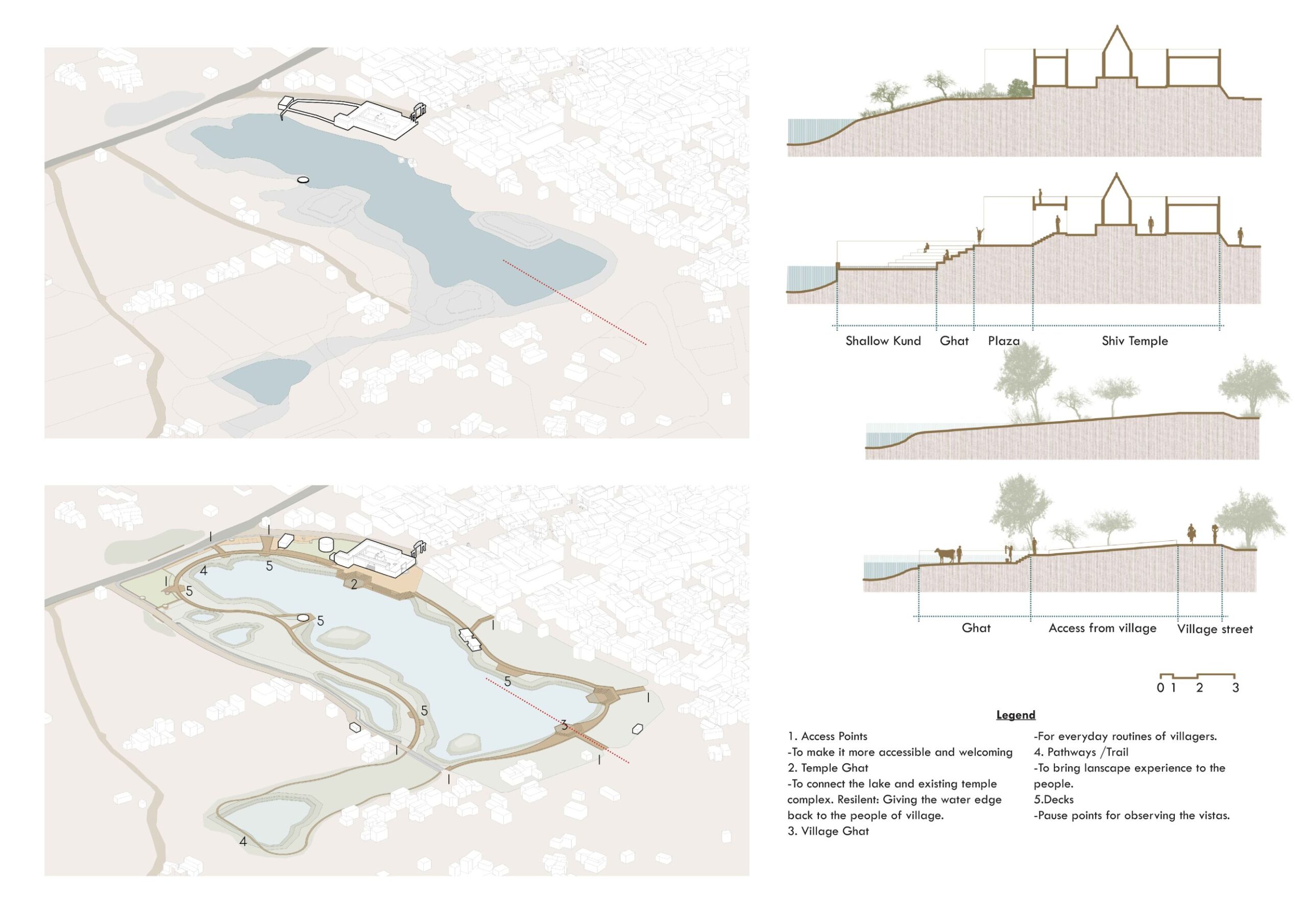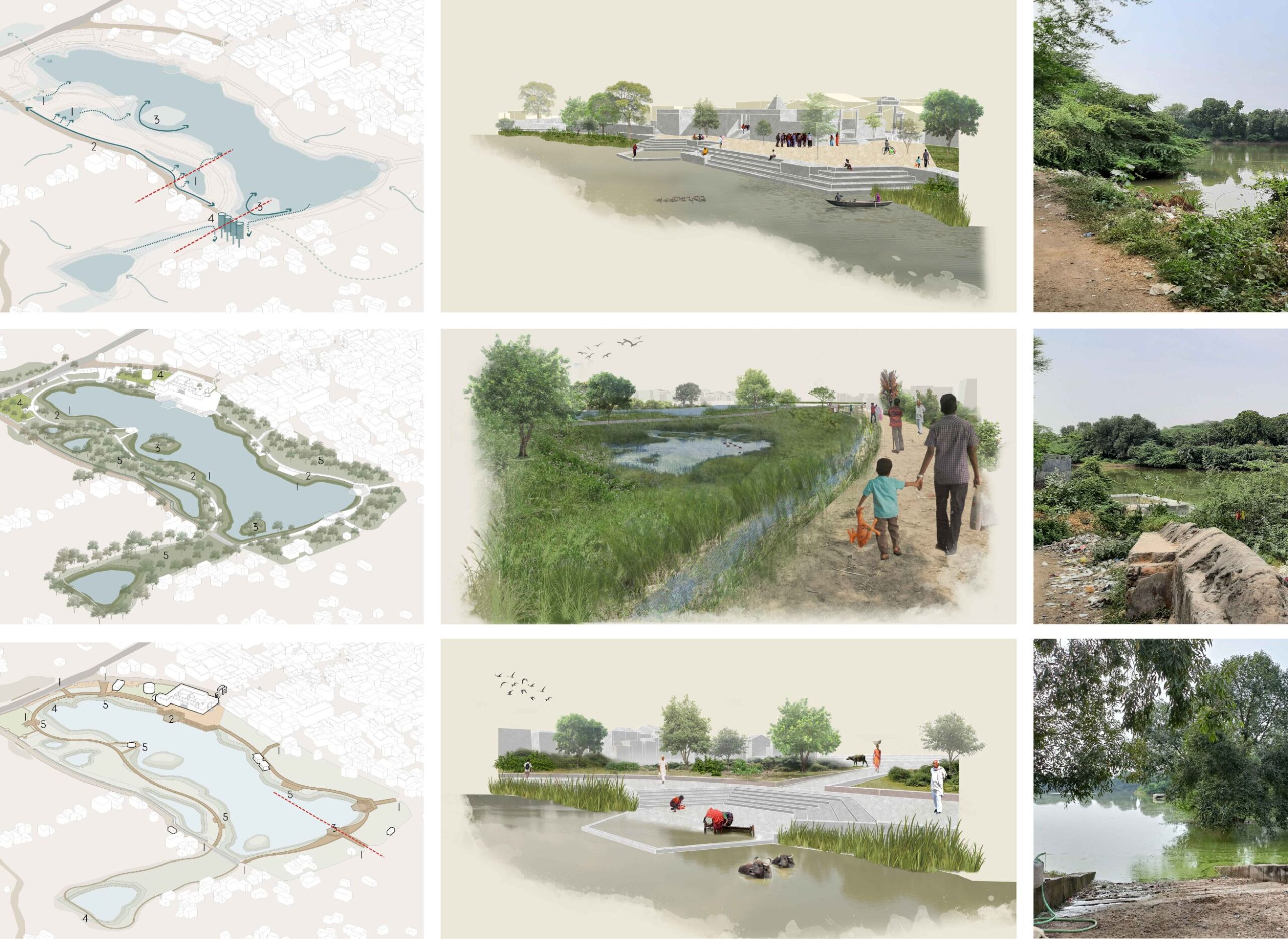
Dodivada, Gujarat designed by Doro
Dodivada, a village located in the east of Gujarat is home to the famous Bahucharaji Temple where a huge number of devotees flock on Saturdays and festivals.
The temple gained its importance because of historical factors, where the close proximity to the River Rupen was a major association. With time, the river flow has depleted, being unable to cater to the needs of the village, surrounding areas have been neglected and hence the association with the temple is lost. A Shiv temple and a Talav make the other end of the village.
The lake area like most villages is treated as a dumping ground and used majorly for the cattle, hence is disconnected from the village. The studio was involved in doing a background study, identifying opportunities and devising interventions and strategies that would contribute to the infrastructure both socially and ecologically.
Mapping of important public buildings was done to understand the fabric of the community. Dodivada, like many other villages, also encounters a large outflux of migrations, leaving behind their old houses. A few public buildings and houses are left abandoned in the village that are identified and proposed to be repurposed and retrofitted for the residents as community infrastructure.

The three major identified nodes for the intervention are the chowk, the River Rupen, and the Talav.
Gathering during the festivals, the Rath Yatra, and everything that involves mass participation takes place at the main chowk. Seatings under a neem Tree, compressed earth for the streets, and the otlas outside the households are some of the features of the street. The rath is assembled at the “Patel nu Maadh”, halts at the main chowk and goes around the periphery of the village.
Acknowledging the vital activities that take place at the chowk, interventions are proposed to facilitate them while accounting for transitional ways of life.
Amongst the various public buildings, a few at the chowk were identified to be re-purposed or rebuilt. Out of the three identified buildings, the community library (Built by the Gaekwads) that stands in the middle of the street is proposed to be rebuilt while the other two buildings i.e. the courtyard house and an old school, serve as a communication centre and women’s skill development centre.
Being left unused, the strategic reuse of the buildings in the chowk promises to be a change maker in the village, serving different amenities for all.
The River
Rupen, once a significant river associated with the temple, has now changed its flow and become a small dry stream along the edge with occasional hurried flooding. The neglected and unkept stream of Rupen often sees occasional floods due to a lack of edge conditions and sparse flora.
The existing functions are studied which included a prominent hanuman temple at one edge and a cattle ground alongside. There is one of the primary open public spaces for the village beside the temple.
The interventions proposed at the river attempts to re-establish the connection between the river and the temple sentimentally and ecologically. The place-making of the entire stretch of the river bank aims to create a water-sensitive bank to preserve the quality and quantity of water along with additions of social/religious spots on the transitional paths. Also, the existing vegetation is relooked resulting in an expansive flora cover.
In order to restore the river bank and the surrounding areas, various strategies were applied, ranging from ecological and water restoration to social. The ecological strategy looked at diverse layers of plantation to facilitate water infiltration, combat floods and engage biodiversity.

The introduction of check dams, detention ponds, flood ponds, percolation pits and strategic
soft-scapes are envisioned to contribute towards the overall flood management and revitalization
of river water.
In order to connect the people to the river experientially, intervaled social/religious interventions are planned in the form of an interpretation centre, the library, the shrines, kund, meditation, gau shala, food pavilions, trails through the forests and eventually culminating at the ghats. Along with inserts, the access of the village and the cattle grazers is retained while new walkways and vehicular are proposed for efficient accessibility.
The Talav
Situated at the rear end of the village in proximity to the Shiv Temple, the talav (lake) that was once the social and utilitarian centre of the village, currently is only used for cattle and left redundant by the people who are solely misusing it as a dumping ground.
Since the lake is located at an isolated edge, the proposal aims to provide multiple accessible connections from possible neighbouring nodes within the village and even outside the village. It re-establishes the connections from the main chowk in the village. The lake water is also preserved and replenished by water retention strategies. Along with this relooking at the flora distribution and adding newer soft capes have improved the ecological cover.

Our process began with mapping the seasonal flow of water and its existing edge conditions. Detention ponds, bioswales, eco-mounds and percolation wells and strategic layers of vegetation are devised to prevent flood and downstream erosion along with enhancing biodiversity. The intervention proposes an accessible connection around the lake while creating strategic recreational and utilitarian spots for diverse users from all the neighbouring nodes culminating in the lake.
The main access from the village is recreated through the chowk while opening the temple to the lake through ghats. Various accesses in the form of ramps, trails, decks and spill-out spaces are proposed specifically for cattle, washing, and recreational spaces for the villagers. The Lake edge on the main road also is made accessible as a public lake.

All the interventions proposed focus on the overall long-term development of the village, with considerate transformations of the edges and the nodes.



Project Facts of Dodivada
Documentation Team- Jay, Khushi, Pankaj, Naomy, Saumil
Design Team- Parv, Naomy, Saumil
Visualization Team- Poorva, Parv, Jui, Naomy, Saumil






